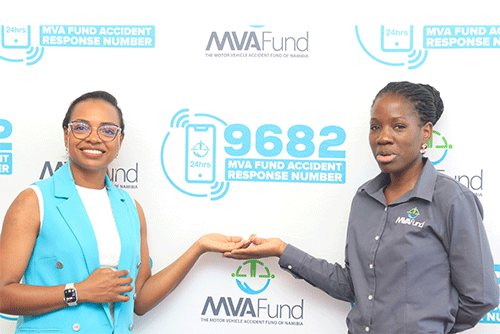The Motor-Vehicle Accident (MVA) Fund has thus far committed an amount of N$192 million towards medical and rehabilitation expenses in an attempt to bring independence to road crash claimants.
From its inception in April 2014 to the period 31 December 2021, the fund has rehabilitated 2 223 claimants, of whom 625 were returned to work, 1 331 to the community and 267 to school.
The fund also experienced a sharp increase in the costs of treatment during the first and second quarters of 2021, when the Covic-19 pandemic was at its peak and treatment facilities and supplies were limited.
This was revealed by the MVA Fund’s spokesperson Surihe Gaomas-Guchu in an interview with New Era recently on the overview of the fund’s rehabilitation programme.
Asked how much is budgeted annually to achieve its rehabilitation goals, she said the fund determines its annual budget based on the current caseload as well as anticipated cases.
“The allocation is used for medical intervention supplies as well as house modification needs, all geared towards returning the injured person to normal life pre-injury. Prior to rehabilitation, the clients need medical treatment and stabilisation in the acute phase, and the current budget is set at N$180 million.
The MVA Fund implemented an intensive rehabilitation framework aimed at helping road crash survivors through the process of recovery, and to ensure they make a swift transition to productive life and independence.
This is done through tailor-made rehabilitation programmes and a multi-disciplinary and multi-skilled approach.
Gaomas-Guchu said the MVA Fund’s rehabilitation programme ties in with its vision of ‘supporting customers’ journey to independence,’ for an active and meaningful life.
Its main objective is to reintegrate seriously injured persons back into society by returning them to school, work or community.
Seriously injured persons are claimants who sustained spinal cord injuries and severe traumatic brain injuries.
The rehabilitation approach is focused on increasing the quality of life through a continuum of treatment in the post-hospital environment to facilitate recovery through access to step-down facilities and health professionals such as occupational therapists, speech therapists and biokinetics.
The rehabilitation programme also includes return-to-work programmes and the modification of claimants’ homes to enhance mobility. For instance, a claimant using a wheelchair should be able to perform the activities of daily living as safely and comfortably as possible, while maintaining some degree of independence.
– anakale@nepc.com.na


